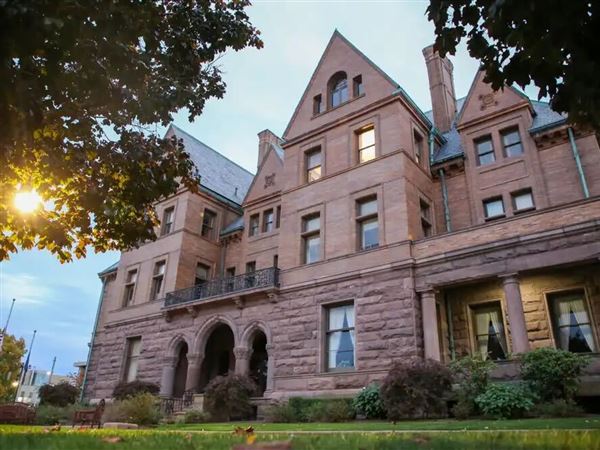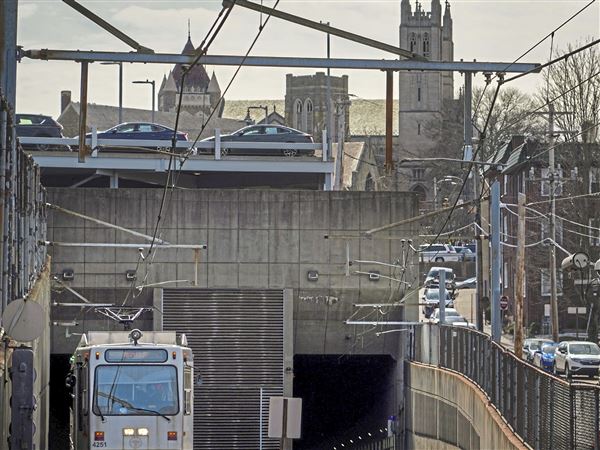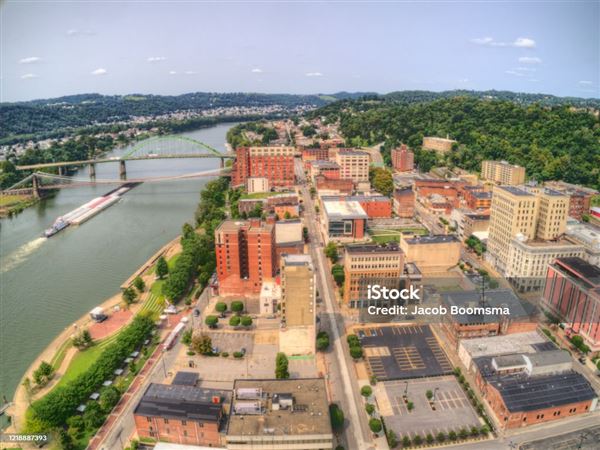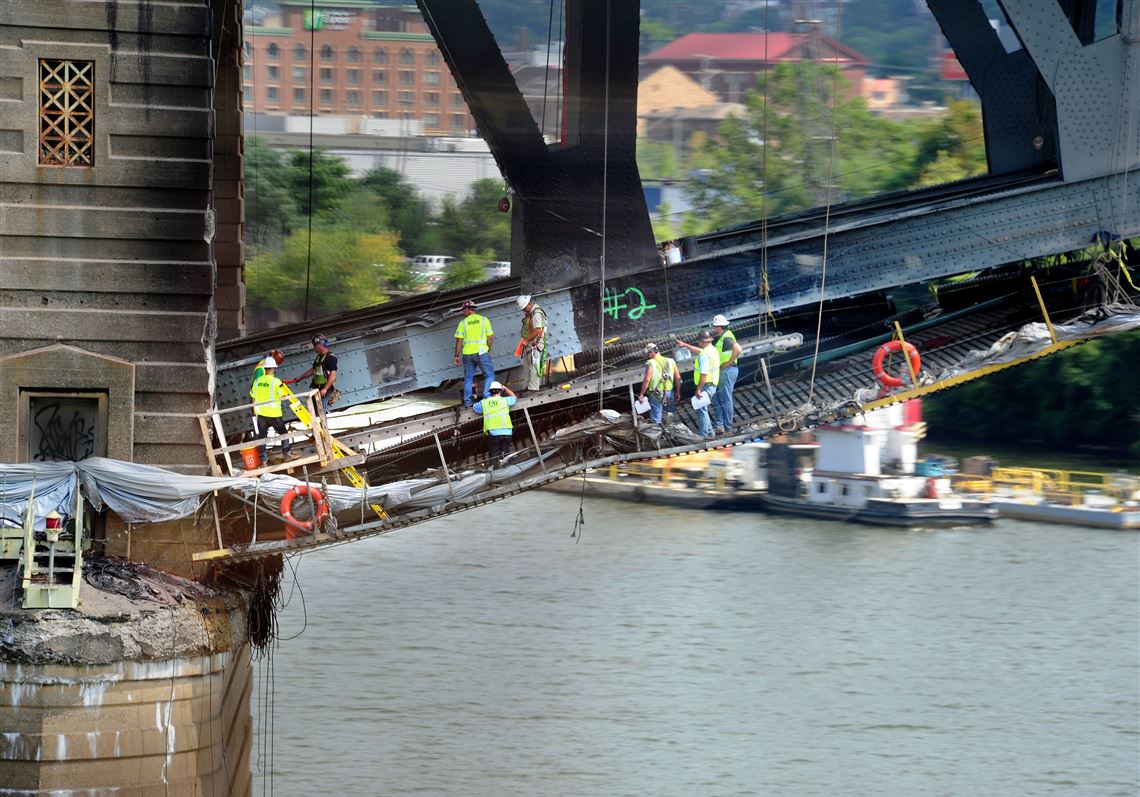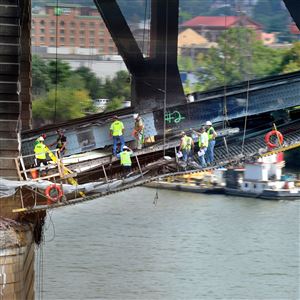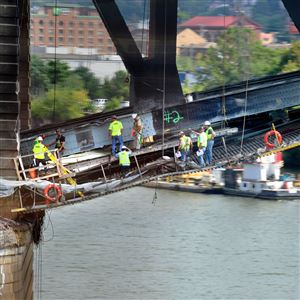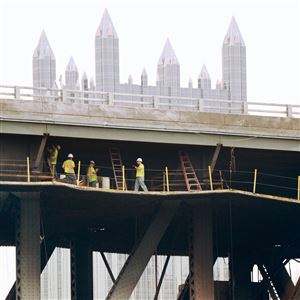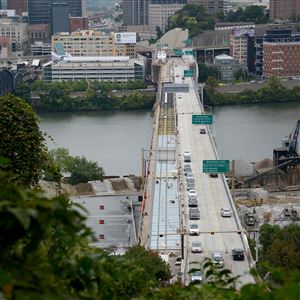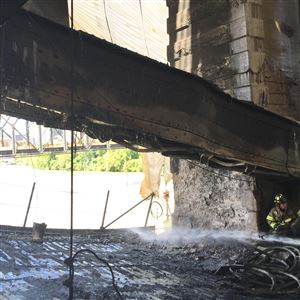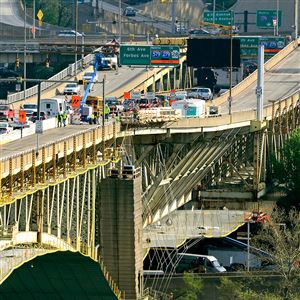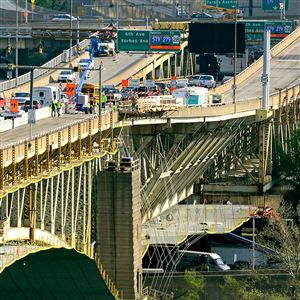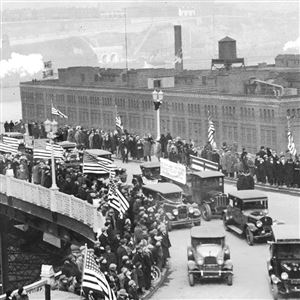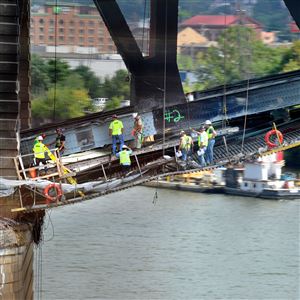The construction fire that has closed the Liberty Bridge since Friday couldn’t have happened in a more precarious spot on the 88-year-old structure.
The 30-foot steel chord that bent about 6 inches out of place and compressed 1⅝ inches rests atop the bridge’s pier 7, at a critical juncture, with tons of steel above it and enormous pressure bearing down on it. Located on the down-river side of one of two concrete piers in the Monongahela River, the chord is designed to withstand 2.4 million pounds of pressure.
After the damage from the fire, the chord probably can withstand only about 2 million pounds of pressure, said Lou Ruzzi, PennDOT’s district bridge engineer.
“This [chord] had the most load,” said Mr. Ruzzi, who took the Post-Gazette on the first media tour of the damaged area Wednesday. “It was absolutely the most sensitive spot.”

That’s why PennDOT quickly removed construction equipment and closed the bridge immediately after the fire, limiting reconstruction efforts to the far ends of the bridge until repairs can be made. PennDOT District Executive Dan Cessna said Wednesday that the design for repairs has been approved, pieces are being fabricated and work to install them should begin today with a goal of finishing by Monday morning.
The fire occurred as the bridge was undergoing an $80 million reconstruction that required contractor Joseph B. Fay Co. to build two temporary corrugated steel walkways under the structure that wobble like the moving sidewalks on Noah's Ark at Kennywood Park.
One is immediately under the bridge deck and the other suspended lower at about the top of the piers so crews can work on the structural steel for painting and other work. Crews get access to the work areas through a series of winding staircases and ladders at each end of the bridge.
On Wednesday, soot from the fire was visible on beams from more than 20 yards away from the site of the blaze. Someone wrote “This Way” and drew an arrow in the soot to point toward the ladder that drops down to the area of the damaged chord.
Workers were painting the damaged chord to prepare it for repairs. Previously, they had removed about 200 rivets used to attach the chord and replaced them with bolts. This was meticulous work, replacing one at a time, moving to another corner of the beam after each one so replacement didn’t cause too much pressure on any one spot.
A few feet away, a crew from AWK Consulting Engineers in Turtle Creek used a surveying device known as a robotic total station. The device uses mirrors, a laser and a series of sensors to test every half-hour 24 hours a day for any movement in the bridge.
The good news is the bridge has moved less than 1/1000th of an inch since the fire.
“What we’re worried about is this bridge moving a quarter-inch that way or that way,” Mr. Ruzzi said, gesturing up river and down river as he watched the workers. That could cause it to collapse.
To repair the damage, PennDOT has worked with a series of engineers as well as experts from Carnegie Mellon and Lehigh universities to design a pair of 26.5-foot braces that will be attached to each side of the damaged chord. Workers will use jacks — and perhaps heat — to try to pull the damaged chord back as close as possible to its original length before bolting the braces in place as tightly as possible.
Before, during and after the repair process, experts will continue to monitor the stress on the bridge. Samples of steel from the damaged chord will be removed for analysis.
The fire started about 1 p.m. Friday when sparks from someone cutting steel ignited plastic ventilation pipe and a construction tarp right under the chord. It took Pittsburgh firefighters about a half-hour to put out the blaze, which burned at more than 1,200 degrees.
Although no one was injured in the fire, OSHA Area Director Christopher Robinson said the agency began an investigation of the incident Wednesday to ensure the safety of workers at the construction site. The review of conditions on the bridge could take as long as six months, he said.
Mr. Robinson said inspectors will review whether the contractor had appropriate fire suppression equipment available and someone assigned to watch the work area for a possible fire.
Fay is facing fines of $213,600 a day while the bridge is closed — $8,400 an hour for the unexpected closure of the bridge and $12,000 a day for the closure of the Boulevard of the Allies ramp.
Ed Blazina: eblazina@post-gazette.com or 412-263-1470.

First Published: September 8, 2016, 4:00 a.m.
Updated: September 8, 2016, 4:15 a.m.

